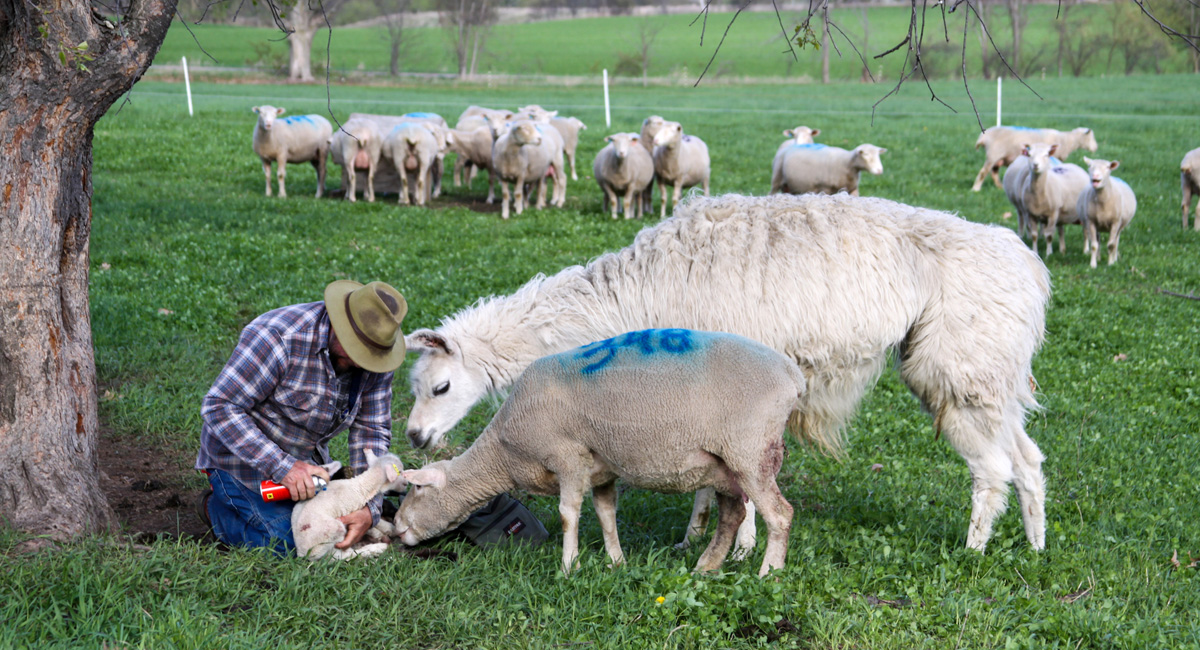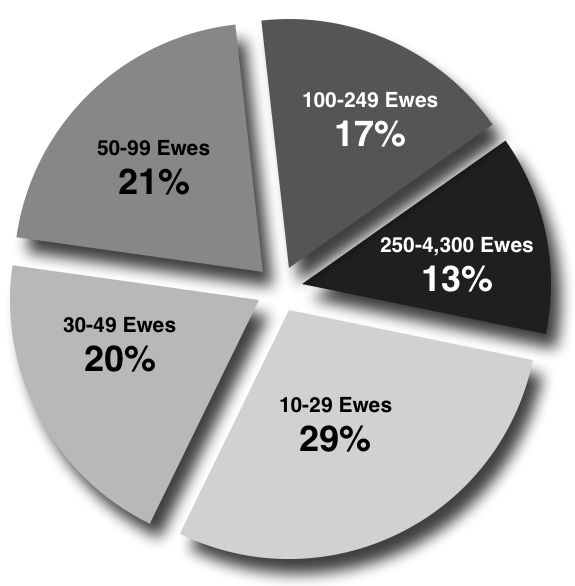OPP Concerned Sheep Breeders Society
OPP, or ovine progressive pneumonia, has been circulating in North America for more than 100 years. While first reported in the U.S. in 1914, it took decades before the impact was fully recognized. By 1942, a USDA senior veterinary pathologist declared that “Chronic progressive pneumonia is unquestionably of considerable economic importance.” And yet today, 80 years later, producers continue to wrangle over whether or not it matters if sheep have OPP.
So why the disconnect? It’s complicated and you’ve probably heard arguments both ways. While there are some areas worthy of debate, much of the discussion refers to a 40-year-old study that reported no difference in production between ewes harboring OPPv, the virus that causes OPP, and those free of infection. The problem, perhaps not understood at the time, was that about 600 ewes unable to feed even one lamb had been culled due to hard bag shortly before the study began (see OPP Controversy on our ‘Library’ page).
Sometimes referred to as The Silent Thief, OPP is easily missed. In a fairly young flock being heavily selected for genetic gain, it’s unlikely to see much difference in production between OPP test-negative and test-positive ewes since the negative effects don’t set in until years later. The net result is an industry which typically considers a ewe ready to cull by age 5 or 6, while if free of OPP she might easily produce to 8 or 9 leaving more ewe lambs to market or sell as replacements.
Former USDA researcher, the late Dr. Randall C. Cutlip, conducted the first experimental OPP eradication program in the ‘80s, providing an option beyond just “culling the lungers” for those willing to follow his protocol. Soon after, a small group led by Wisconsin producer the late Jim Schultz and his veterinarian, Dr. Bob Leder, established the OPP Concerned Sheep Breeders Society. Restocking from within after having culled heavily, Jim found it difficult to locate OPP-negative rams so an early priority of the Society was to establish a network of like-minded producers.
Word spread. (The Shepherd magazine assisted greatly, continuing their support today.) And before long OPP Society members from all over the U.S. and Canada were learning from each other and collaborating with researchers. Today, thanks to groundbreaking USDA investigation into modes of OPPv transmission, producers in Minnesota have demonstrated that the virus can be eradicated without costly orphan rearing of lambs or premature culling of test-positive ewes that remain productive. This new eradication strategy, which can be put into practice by anyone, is described in Minnesota’s Eradication Trial report found on our ‘Library’ page.
Now well into our fourth decade, the OPP Society is an all-volunteer organization welcoming both commercial and purebred producers as well as veterinarians, researchers, educators, students and all others who share an interest in sheep health. Membership is not intended to indicate freedom from OPP, but rather an active concern about the effects of this disease within member flocks and within the North American sheep industry as a whole.
OPP Concerned Sheep Breeders Society
Directors
HOLLY NEATON, DVM
OUTREACH
MINNESOTA
952-240-2192
hjneaton@gmail.com
BOB LEDER, DVM
CO-FOUNDER, PRESIDENT
WISCONSIN
715-250-0002
robertlederdvm@gmail.com
JAMES BAGLIEN
OREGON
DIRECTOR
541-753-4812
ThickSheep@gmail.com
ISABEL RICHARDS
SECRETARY
NEW YORK
315-750-0740
isabelrichards@live.com
ETIENNE RICHARDS
NEW YORK
WEBMASTER
315-272-9482
farmer@gibraltarfarm.com
MICHELLE CANFIELD
TREASURER
WASHINGTON
360-770-0615
michelle@canfieldfarms.com
GENE SCHRIEFER
WISCONSIN
DIRECTOR
608-987-4337
sheepfarm@charter.net
Advisory
CLARK BREDAHL
IOWA
BILL DUFFIELD
ONTARIO
JUDY LEWMAN
MINNESOTA
JEAN T WALSH
NEW YORK
DEVI PATNAYAK, BVSc, PhD
U OF MN-VDL
CINDY WOLF, DVM
U OF MN EMERITA

